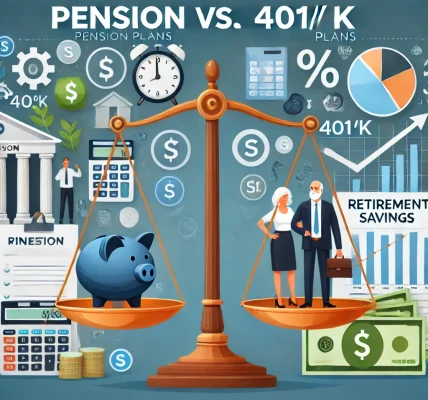Introduction
As retirees seek financial stability, reverse mortgages have gained popularity as a potential source of income. However, while they offer significant benefits, they also come with risks that can impact long-term financial security. This article explores the pros and cons of reverse mortgages, helping retirees make informed decisions.
What is a Reverse Mortgage?
A reverse mortgage is a loan available to homeowners aged 62 and older, allowing them to convert part of their home equity into cash. Unlike traditional mortgages, where borrowers make monthly payments to lenders, a reverse mortgage provides funds to homeowners, which are repaid when the borrower sells the home, moves out, or passes away.
Types of Reverse Mortgages
- Home Equity Conversion Mortgage (HECM) – The most common type, insured by the Federal Housing Administration (FHA).
- Proprietary Reverse Mortgage – A private loan offered by lenders, typically for high-value homes.
- Single-Purpose Reverse Mortgage – Offered by non-profits and state agencies for specific purposes like home repairs or property taxes.
Advantages of Reverse Mortgages
1. Supplementing Retirement Income
- Provides a steady stream of income for retirees facing financial shortfalls.
- Can be used for medical expenses, home modifications, or daily living costs.
2. No Monthly Mortgage Payments
- Unlike traditional home loans, borrowers are not required to make monthly mortgage payments, reducing financial burden.
- The loan is repaid when the home is sold or the borrower no longer lives in the house.
3. Flexibility in Payment Options
- Borrowers can choose between a lump sum, monthly payments, a line of credit, or a combination of these options.
4. Home Ownership Retained
- The borrower retains ownership of the home as long as they meet loan obligations, such as property tax and insurance payments.
5. Non-Recourse Loan Protection
- The borrower or their heirs will never owe more than the home’s value at the time of repayment, even if the loan balance exceeds the home’s market value.
Disadvantages of Reverse Mortgages
1. High Fees and Interest Rates
- Reverse mortgages often have higher closing costs, origination fees, and insurance premiums compared to traditional loans.
- Interest accrues over time, increasing the total repayment amount.
2. Risk of Losing the Home
- Failure to pay property taxes, homeowner’s insurance, or maintain the property can lead to foreclosure.
3. Reduction in Home Equity
- The loan balance grows over time, reducing the amount of equity left for heirs or future needs.
4. Impact on Government Benefits
- Payments from a reverse mortgage could affect eligibility for Medicaid and Supplemental Security Income (SSI).
5. Complicated Loan Terms
- Reverse mortgages can be complex, making it essential for borrowers to seek financial counseling before proceeding.
Is a Reverse Mortgage Right for You?
Consider a Reverse Mortgage If:
- You plan to stay in your home for an extended period.
- You need additional income and have no other viable options.
- You do not intend to leave your home to heirs.
Avoid a Reverse Mortgage If:
- You plan to move in the near future.
- You cannot afford property taxes and maintenance costs.
- You want to preserve home equity for your heirs.
Alternative Options
Before committing to a reverse mortgage, retirees should explore other financial options:
- Home Equity Line of Credit (HELOC) – A more flexible way to access home equity with lower fees.
- Downsizing – Selling a large home and moving to a smaller one can free up funds while reducing maintenance costs.
- Government Assistance Programs – Programs such as Supplemental Security Income (SSI) or Medicaid may provide needed financial aid.
Conclusion
A reverse mortgage can be a valuable financial tool for retirees, but it is not suitable for everyone. Understanding the risks, costs, and long-term implications is crucial before making a decision. Consulting with a financial advisor can help ensure that retirees choose the best option for their unique situation.




